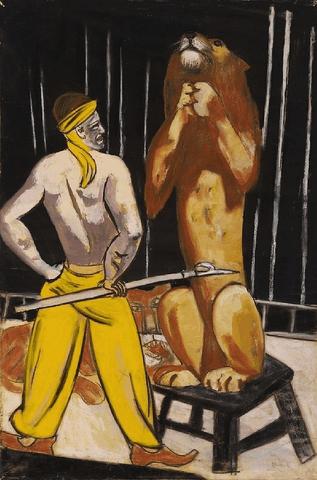German Police Recover 1,500 Nazi Looted Works of Art

German police have recently recovered 1,500 mostly modernist works of art - including from artists such as Picasso, Chagall, and Matisse. The entire haul, estimated to be worth over €1 Billion, was discovered in the flat of a Munich resident late last year.
The art was originally confiscated by the Nazi's during the 1930's and 1940's. From there it ended up in the hands of art collector Hildebrand Gurlitt who upon his death passed on the trove of great works to his son Cornelius. It appears that not all of the original haul had been held onto by Cornelius; as he apparently and regularly sold various pieces to provide income for himself. Now, leaving aside how this all escaped the authorities attention at the time of the disbursement of Hildebrand's estate remains the ongoing question of who wasn't looking that should have been when Cornelius was selling off various items from this treasure trove.
For instance, one such painting was sold in Cologne for €864,000. Apparently the auction house involved either actively looked the other way or failed to even follow some basic due diligence when it came to determining the chain of title regarding this particular painting; Lion Tamer by Max Beckmann (a world class artist who had countless works confiscated by the Nazi's and who lost his teaching position at The Art School in Frankfurt after Hitler came to power). This sale occurred in spite of the fact that many of these otherwise well known paintings had been thought "lost" for years, and/or in some instances had clearly belonged to Jewish collectors prior to the Nazi thefts.
Now, as previously noted by our website, Hitler and his cronies were not only masters of looting art, but also because of their warped ideological beliefs sought to take out of circulation particular forms of art deemed "degenerate". In this case modernist works were singled out for disapproval and confiscation because of their "Jewish Bolshevist" nature. Ironically Hildebrand Gurlitt lost his post in Germany as a museum director during the 1930's because he was half-Jewish. Thus there may be an argument he was trying to preserve the works. Nevertheless his motivations remain unknown; in contrast to his son's more pecuniary concerns - which ultimately led to the 2011 discovery of his collection during a customs investigation of him on a 2010 train trip from Switzerland to Munich. Of course why the German government sat on this find for over two years brings up a host of other as of yet unanswered questions (perhaps more extend and pretend in hopes that potential claimants continue to pass away and thus not have to deal with the sticky issue of sorting out questions of true ownership of the art...).
In the meantime, for those of you new to these issues and interested in an entertaining look at late Second World War efforts to save Nazi plundered art from destruction during the Third Reich's collapse George Clooney's "Monuments Men" has just been released. If you do see the movie however be prepared for a less than truthful rendition of what actually happened when 350 or so men and women from 13 countries served in the Allied Monuments, Fine Arts and Archives Section dedicating to protecting among other things Europe's art during World War II's closing months. For a more accurate look at the real Monuments Men I recommend that after getting your dose of sanitized and dumbed down entertainment at the local cinema you then head over to your local bookstore or library and pick up a copy of Robert M. Edsel and Bret Witter's "The Monuments Men: Allied Heroes, Nazi Thieves, and the Greatest Treasure Hunt in History”.



Post new comment